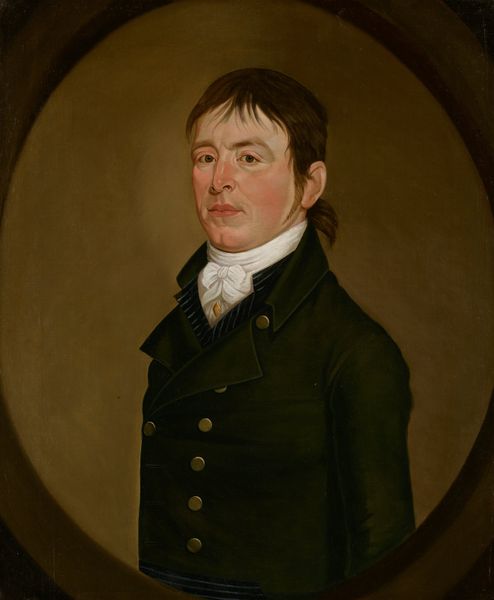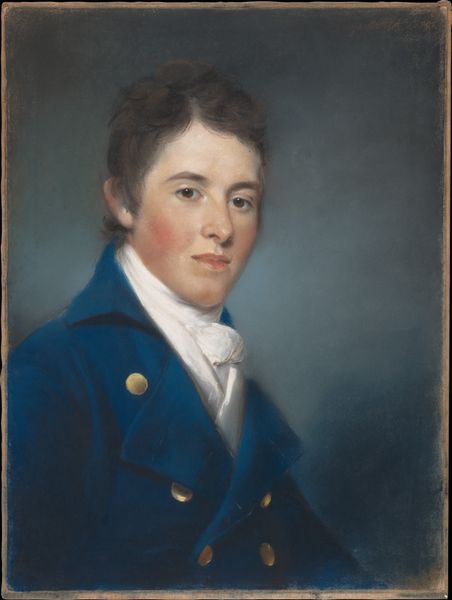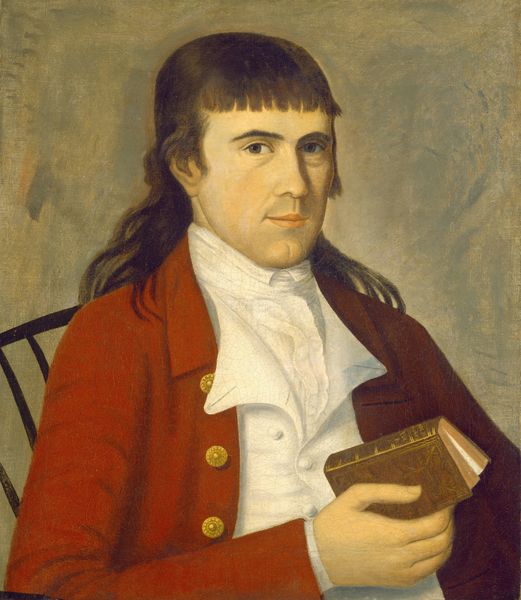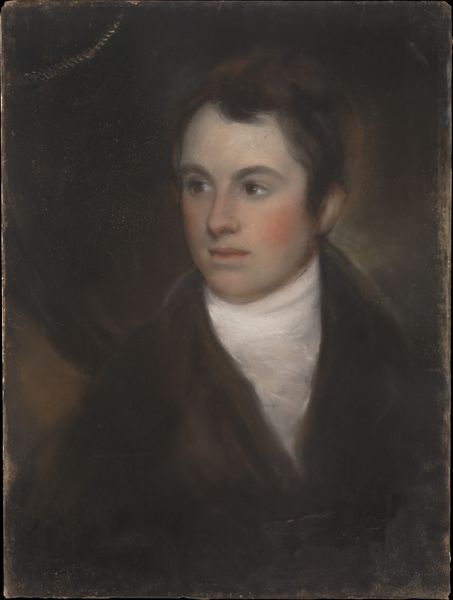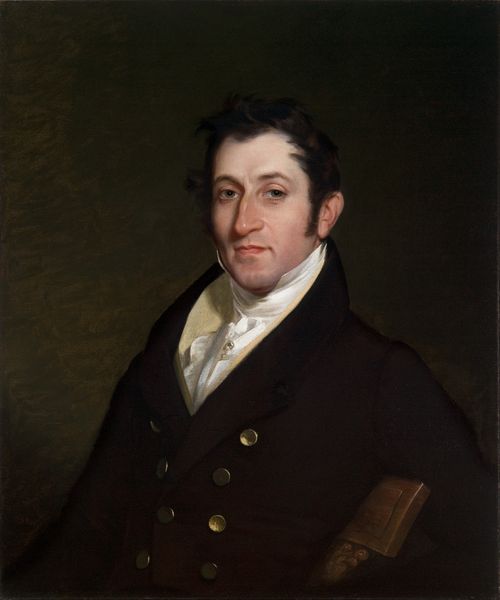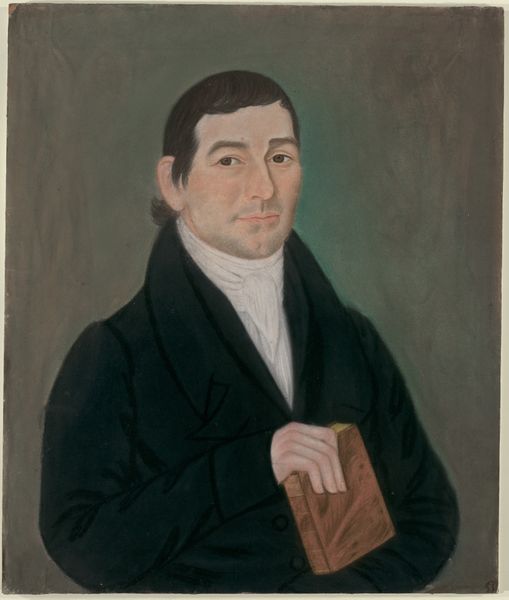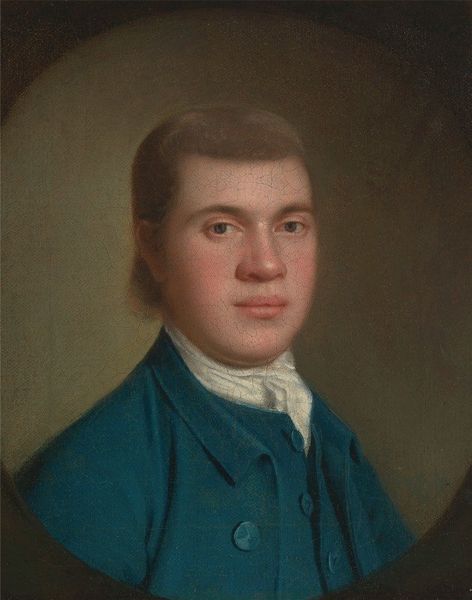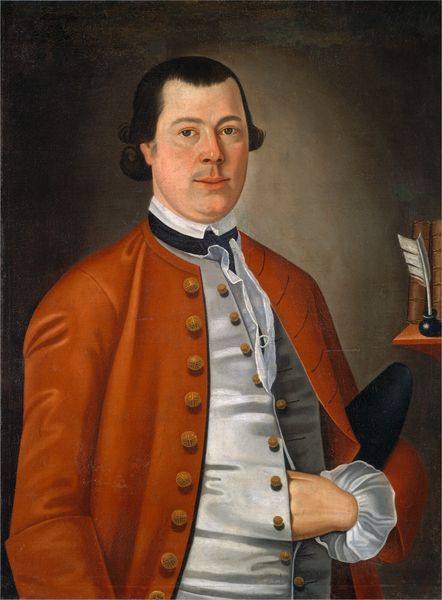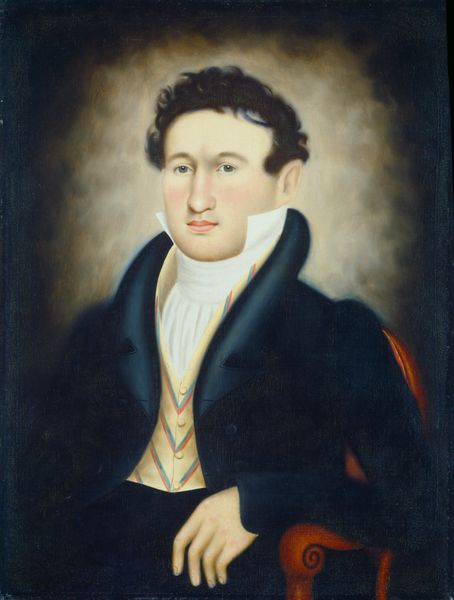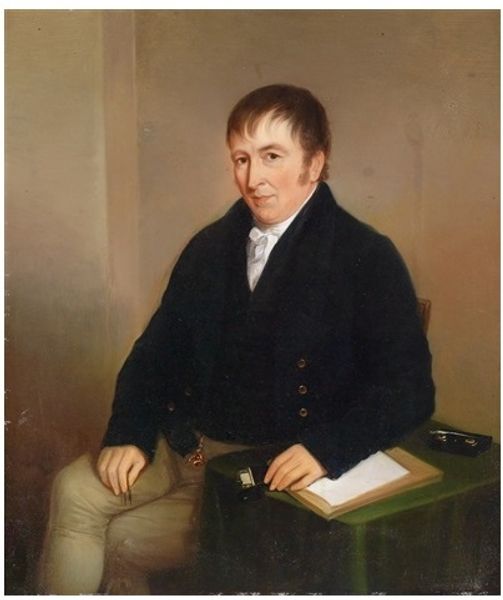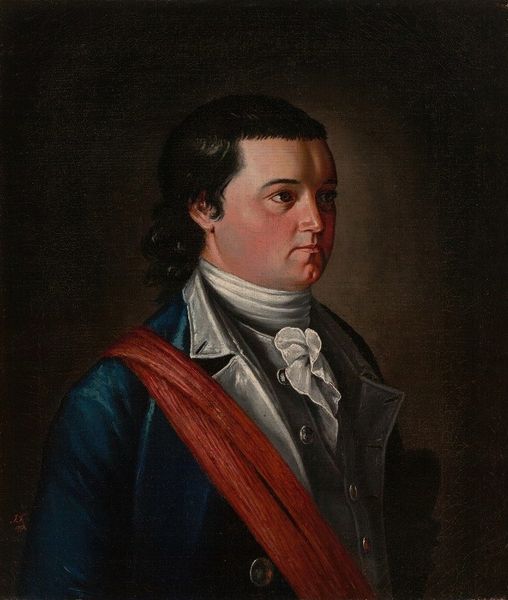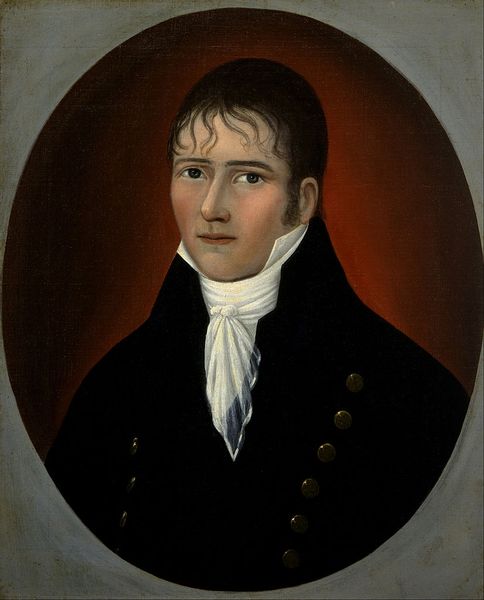
painting, oil-paint
#
portrait
#
painting
#
oil-paint
#
romanticism
#
academic-art
Dimensions: overall: 92.71 × 75.09 cm (36 1/2 × 29 9/16 in.) framed: 110.49 × 85.09 × 8.57 cm (43 1/2 × 33 1/2 × 3 3/8 in.)
Copyright: National Gallery of Art: CC0 1.0
Editor: This is Charles Peale Polk’s painting, "Thomas Corcoran," made sometime between 1802 and 1810 using oil paints. I notice that the figure dominates the canvas and that his red jacket really grabs my attention. What do you see when you look at this portrait? Curator: I am immediately struck by the use of light and shadow. Notice how the light source appears to be coming from the upper right, illuminating the subject's face and casting subtle shadows that define his features? The artist utilizes a clear semiotic approach to draw the viewer's gaze in particular directions, focusing attention through the light on what they want the viewer to perceive. Editor: Yes, I see that too! It's almost theatrical in a way. So, would you say that the use of light is the most important aspect of this composition? Curator: Not exclusively, though certainly important. I consider how Polk employs texture. While his face is rendered with relative smoothness, consider the implied texture of the jacket, achieved through subtle brushstrokes and color variations. How do these textures contrast? What does the difference in surface imply about the subject, in comparison to the world around him? Editor: I hadn’t thought about it that way. It does add a certain depth. I guess it highlights his status, perhaps? Is there also some symbolic meaning that we should take into account? Curator: Consider that the colors could be signifiers and function as a coherent text. Could it be possible that the contrast between the dark suit and the neutral background speak to an interest in duality? We could interpret that as symbolic. Editor: Interesting! I'm definitely seeing the painting differently now. Thank you for pointing out the techniques the artist used. Curator: It is only through our own critical readings that we breathe more meaning into the artwork.
Comments
No comments
Be the first to comment and join the conversation on the ultimate creative platform.
